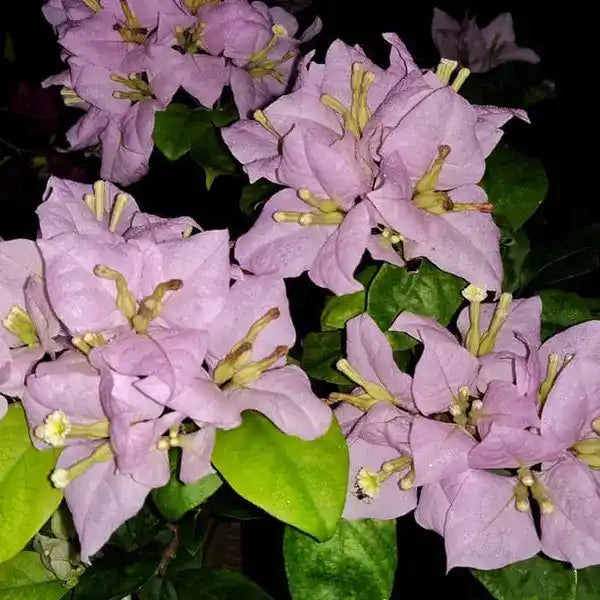
Lilac Formosa Bougainvillea
Selling Size : Single Plant | Pot /Growbag Included | Secure Packing
The "Lilac Formosa" Bougainvillea is a beautiful and popular variety known for its soft, elegant lilac-purple bracts. Its care is similar to other bougainvillea, but with a few characteristics to keep in mind.
Here is a guide to caring for your Lilac Formosa Bougainvillea:
1. Sunlight:
Full sun is non-negotiable. Like all bougainvillea, the Lilac Formosa needs at least 6 hours of direct, intense sunlight per day to produce its best blooms.
In full shade or even partial shade, the plant will produce more leaves and fewer flowers.
2. Watering:
Be mindful of water stress. Bougainvillea are drought-tolerant once established and actually bloom better when they are slightly "stressed" for water.
Water deeply, then allow the soil to become visually dry to the touch before watering again.
Overwatering is the most common mistake and can lead to root rot and a lack of blooms.
During the first few years, water more regularly to help the plant establish its root system.
3. Soil and Potting:
Excellent drainage is essential. Use a well-draining soil mix, such as a sandy or loamy soil.
If planting in a container, make sure the pot has good drainage holes. Clay pots are often a good choice as they help the soil dry out.
The plant does well when it's slightly root-bound, which can encourage more blooms.
4. Fertilization:
Fertilize sparingly. Bougainvillea don't need a lot of fertilizer, and too much nitrogen will encourage leafy growth instead of flowers.
Use a balanced, slow-release fertilizer or one high in phosphorus during the growing season (spring and summer) to promote blooming.
You can also use organic options like bone meal or banana peel compost.
5. Pruning:
Prune after each bloom cycle. This is key to maintaining the plant's shape and encouraging new growth, which will lead to a new flush of flowers.
Trim back long, weak stems to keep the plant compact and well-shaped.
Pruning can also be done to train the plant as a climber on a trellis, fence, or wall.
6. Climate and Hardiness:
The Lilac Formosa is heat-tolerant and thrives in warm climates (USDA Zones 9-11).
It is known to be more cold-resistant than some other varieties, but it is still sensitive to frost. In colder climates, grow it in a container that can be moved indoors during the winter.
7. Other Tips:
Bonsai: The Lilac Formosa is a great choice for creating a bougainvillea bonsai due to its manageable size and beautiful blooms.
Thorns: Be aware that the plant has sharp thorns. Wear gloves when handling and pruning.

